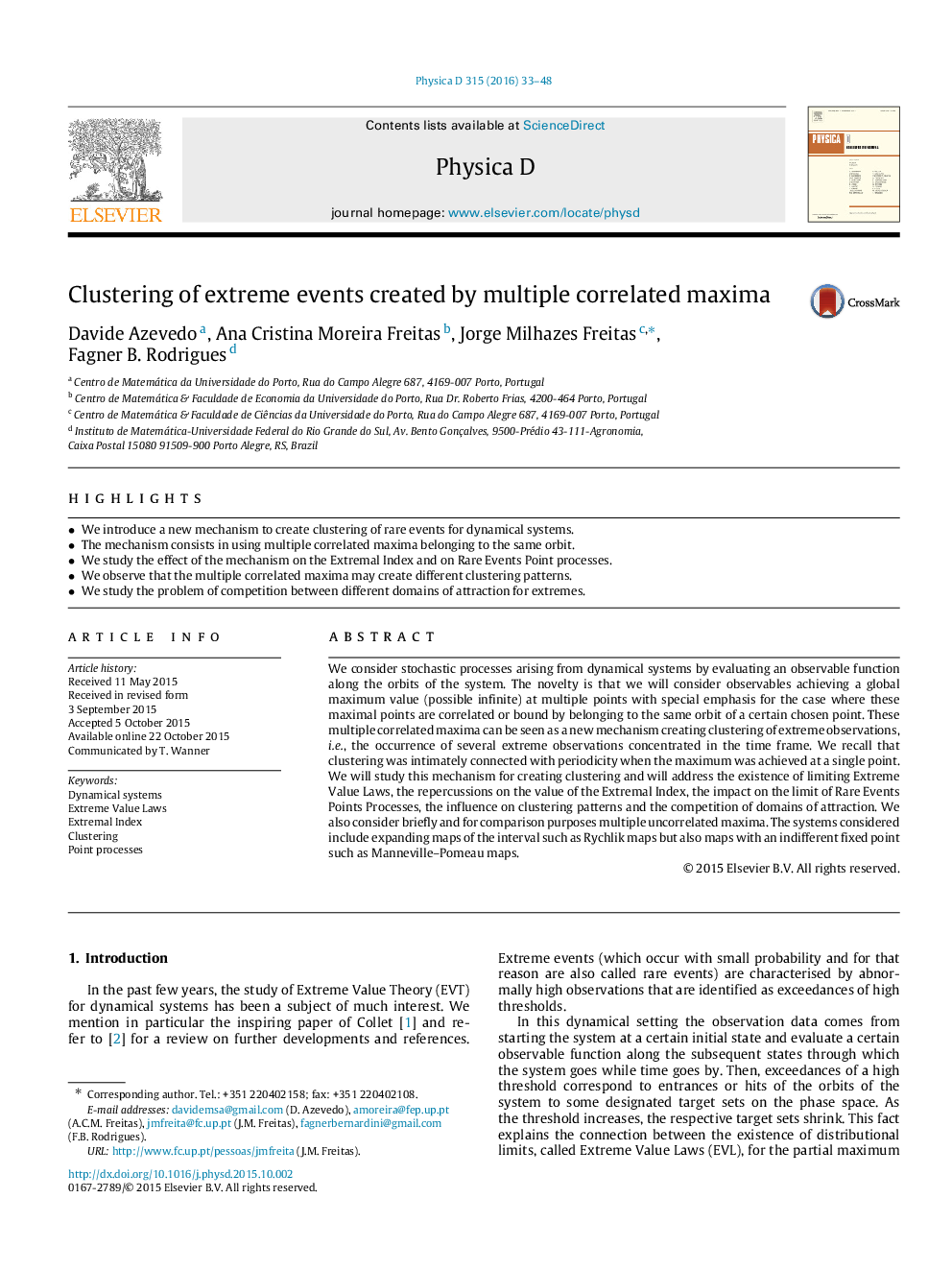| Article ID | Journal | Published Year | Pages | File Type |
|---|---|---|---|---|
| 1899226 | Physica D: Nonlinear Phenomena | 2016 | 16 Pages |
•We introduce a new mechanism to create clustering of rare events for dynamical systems.•The mechanism consists in using multiple correlated maxima belonging to the same orbit.•We study the effect of the mechanism on the Extremal Index and on Rare Events Point processes.•We observe that the multiple correlated maxima may create different clustering patterns.•We study the problem of competition between different domains of attraction for extremes.
We consider stochastic processes arising from dynamical systems by evaluating an observable function along the orbits of the system. The novelty is that we will consider observables achieving a global maximum value (possible infinite) at multiple points with special emphasis for the case where these maximal points are correlated or bound by belonging to the same orbit of a certain chosen point. These multiple correlated maxima can be seen as a new mechanism creating clustering of extreme observations, i.e., the occurrence of several extreme observations concentrated in the time frame. We recall that clustering was intimately connected with periodicity when the maximum was achieved at a single point. We will study this mechanism for creating clustering and will address the existence of limiting Extreme Value Laws, the repercussions on the value of the Extremal Index, the impact on the limit of Rare Events Points Processes, the influence on clustering patterns and the competition of domains of attraction. We also consider briefly and for comparison purposes multiple uncorrelated maxima. The systems considered include expanding maps of the interval such as Rychlik maps but also maps with an indifferent fixed point such as Manneville–Pomeau maps.
